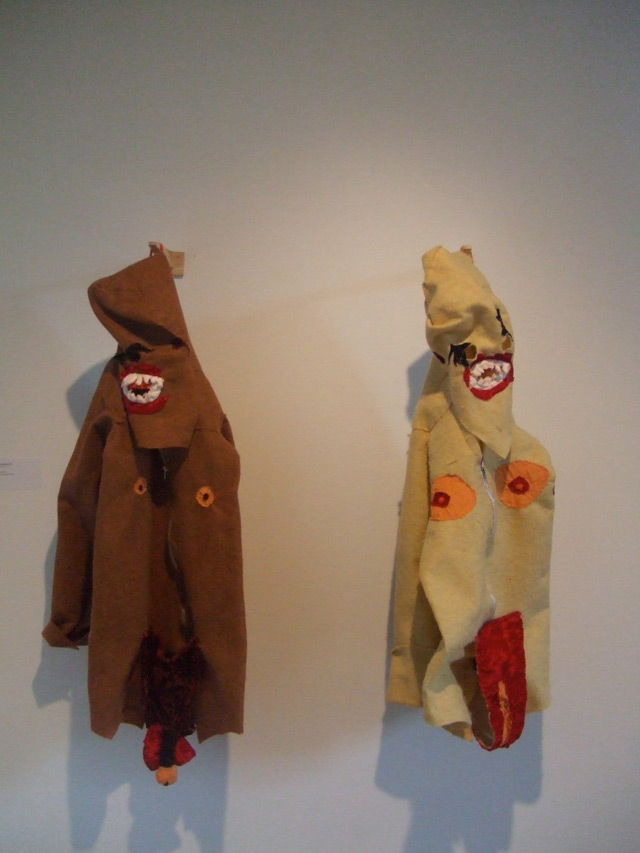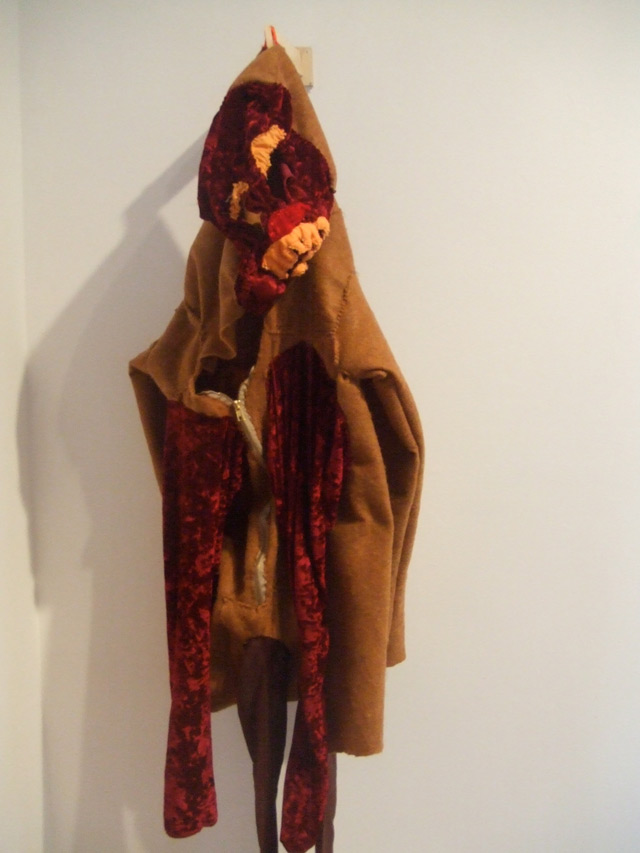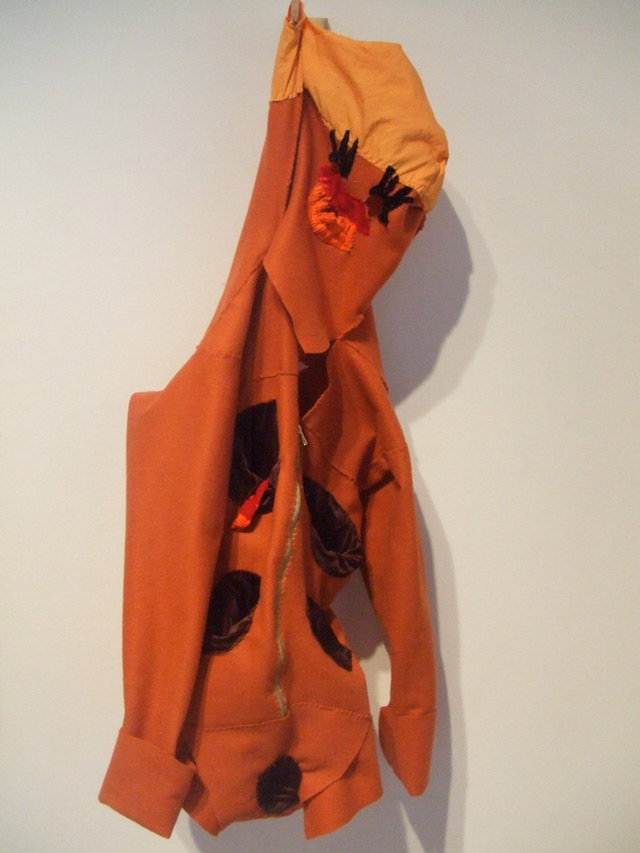 I think of skin as a suit, skin is what conceals us, what often inhibits our ability to look beyond the surface. I desire to be seen from the inside out.
I think of skin as a suit, skin is what conceals us, what often inhibits our ability to look beyond the surface. I desire to be seen from the inside out. Fit to the proportions of an adult body, the naked suits are made from felt, the color of generic skin tones that one might pull from a kids crayon pack.
Velvet, soft, shiny genitals, hand stitched into the felt that fold both inward and outward. Oversized, floppy, exaggerated, too many holes. Transgendered species not completely evolved human apes.

The stitching is crude and fast, like the attention span of a hungry child. There are moments of great detail and specificity like the embroidery of soft cloth teeth, big red velvet lips and black velvet eye lashes. But as a whole, the skins neglect huge amounts of information and articulate an idea of nakedness.
Something humbling, something silly. An idea rooted in both fear and wonderment for how the human body looks and feels when naked.

An overly simplified understanding of how the human body works rooted in some previous knowledge most likely acquired in my early childhood.
As author of “Art and Visual Perception,” Rudolf Arnheim notes, “The child draws what he knows, rather than what he sees.” Simply put, I am a child, drawing and stitching what I know—a general form of nakedness---and not what I see---an individual persons body.

